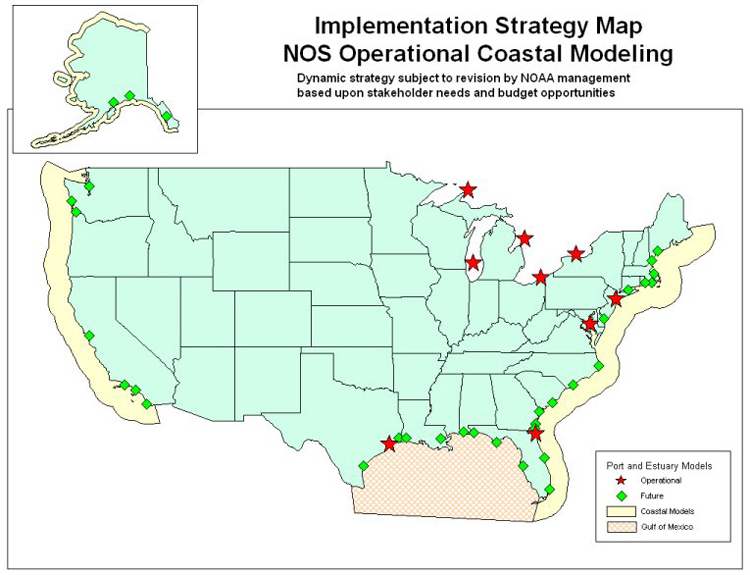|
Experimental Water Level and Current Forecast Guidance
A forecast system developed for the Columbia River at Oregon Health and Sciences University is currently being tested, skill assessed and prepared for transition. New systems are being developed in CSDL for the Delaware Bay and River, for Tampa Bay, FL, and an experimental system is being run pseudo-operationally for the Gulf of Mexico (the National Ocean Service Gulf of Mexico Model (NGOM)). Also under development is a 2nd Generation Chesapeake Bay Experimental Forecast System. The existing CBOFS is based on a two-dimensional barotropic model that provides forecast guidance on water levels only (no currents); however, CBOFS will be upgraded to a fully three-dimensional, baroclinic model in the near-future in order to provide additional forecast guidance on currents, temperature and salinity.
EXPERIMENTAL FORECAST MODELING SYSTEMS
| Click on the box ▄ you want to view. |
DESCRIPTION |
FORECAST
GUIDANCE |
| Columbia River Experimental Forecast System (CREFS) |
▄ |
▄ |
| Delaware Bay Experimental Forecast System (DBEFS) |
▄ |
NA |
| Tampa Bay Experimental Forecast System (TBEFS) |
▄ |
NA |
| 2nd Generation Chesapeake Bay Experimental Forecast System (CBEFS2) |
▄ |
NA |
| National Ocean Service Gulf of Mexico Model (NGOM) |
▄ |
|
| NGOM Short-Term Forecasts |
|
NA |
| NGOM Long-Term Forecasts |
|
NA |
| |
|
|
Future Locations of Development
Forecast systems will be operationally implemented in the future for numerous other ports, estuaries and coastal regions, depending primarily on the user needs and requirements of the marine navigation and emergency response communities. Systems are being considered for Cook Inlet, AK; San Francisco Bay, CA; and for numerous locations along the Gulf of Mexico coast. In addition, upgrades to existing operational forecast systems will be necessary. A map of potential operational forecast system locations is shown below.
 |